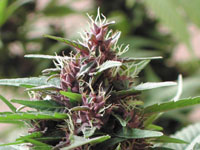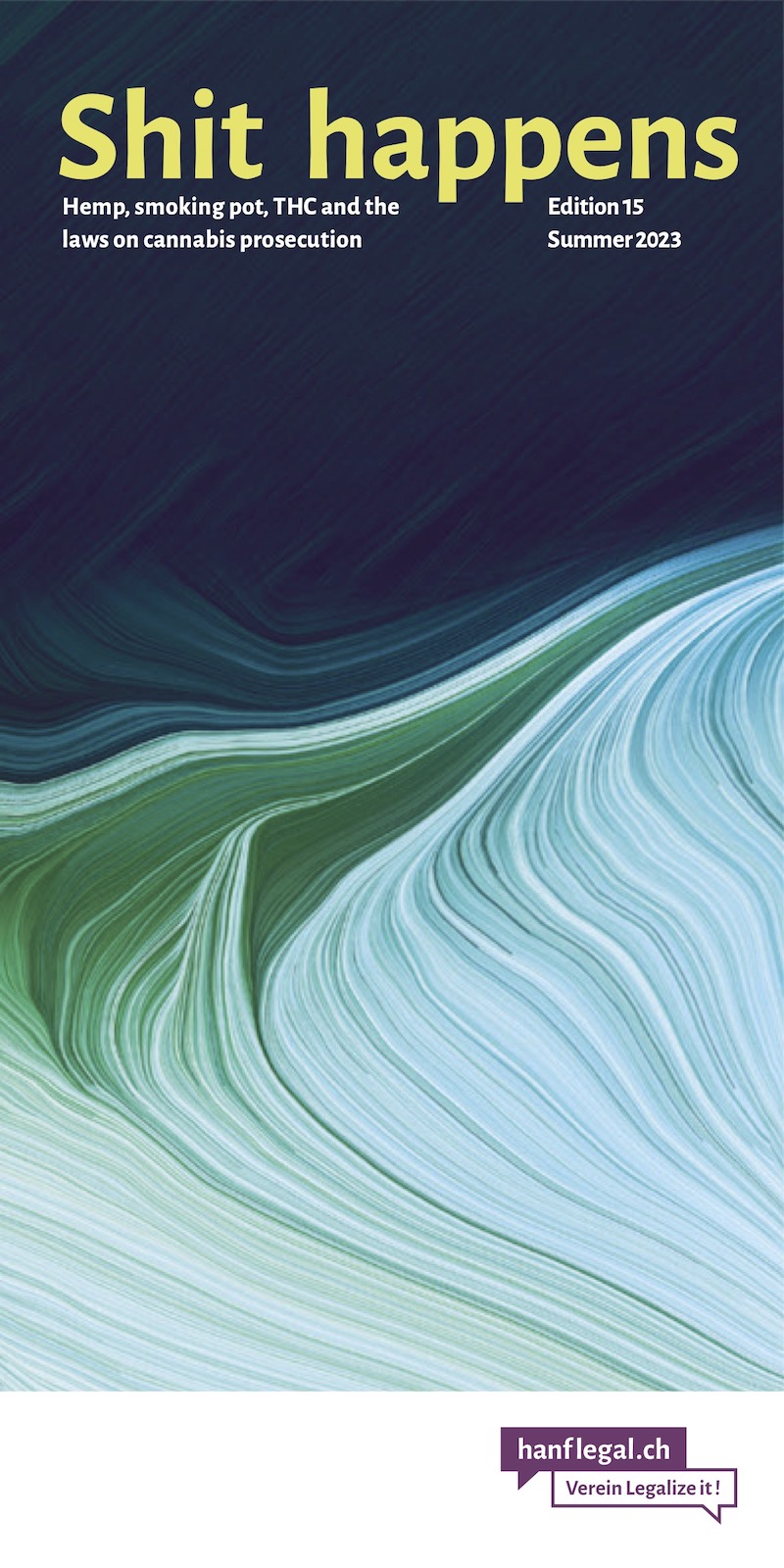- THC & Law:
An excursion into chemistry and biology
The repression against smokers has the criminal law at hand. But also the road traffic law could soon be used to plague the stoners.
The proposed changes
The amendment of the Road Traffic Act is currently in the consultation process. The amendment to the Traffic Regulations Ordinance is to include an innovation that will have a massive impact on car drivers who smoke pot. The consultation period runs until October 15, 2003, and the amendment is scheduled to come into force on January 1, 2005. The explanation of the amendment states under “1.5 Narcotics limits”: “In principle, proof of inability to drive due to consumption of narcotics and drugs is to be provided by applying the three-pillar principle: Based on the police findings (first pillar), medical findings (second pillar) and the chemical-toxicological analysis results (third pillar), the inability to drive is determined by a forensic medical expert. The three-pillar principle can be deviated from if widespread substances are involved that are known to have a negative effect on driving ability. Then the detection of one of these substances in the blood is sufficient to prove the inability to drive (zero limit). For now, these are heroin, morphine, cocaine, various forms of amphetamines (designer drugs) and cannabis.” The actual regulation then states that “tetrahydrocannabinol (cannabis)” is proven in the blood to cause inability to drive. But what exactly does that mean? To clarify we need to know a few chemical and biological facts.
An excursion into chemistry and biology
In the plant, THC (tetrahydrocannabinol) is present as an acid, i.e. tetrahydrocannabinolic acid. This is not psychoactive, that is, it does not drive in. In order to develop a psychic effect, this acid part must be split off. This happens when hemp herb is heated (when smoking or vaporizing). Then the THC is formed. To be completely accurate, the main active ingredient in hemp is the trans, levo isomer of delta-9-tetrahydrocannabinol. There is also the delta-8-THC, as well as the tetrahydrocannabivarin. Central, however, is the delta-9-THC.
How does it come to running in?
When we inhale it, it enters the lungs and is absorbed into the blood. THC is actually fat-soluble, but it can be absorbed to a limited extent by water (which is what blood ultimately is). The THC absorbed in this way is transported through the blood to the brain, where it attaches to certain receptors. This is what triggers the high. However, part of the THC is converted in the liver to 11-hydroxy-THC. This molecule is also psychoactive, even three times stronger than delta-9-THC. So these two THC variants drive in (there may be others, but based on research to date, these two seem to be the central substances). However, only the level of delta-9-THC is measured for detection under the Traffic Regulation Ordinance. Only this is meant by the term “tetrahydrocannabinol (cannabis)” in the traffic ordinance, explains Dr. Peter X. Iten, head of the chemical toxicology department at the Institute of Forensic Medicine at the University of Zurich-Irchel.
The dismantling follows
The longer these substances move around in the circulation, the more these - psychoactive - substances are converted into non-psychoactive substances. The most important of these substances is 11-nor-9-carboxy-delta-9-THC (abbreviated THC-COOH). These degradation products, also called metabolites, are then excreted in advance. Partly via the urine, partly via the stool. And they are also not relevant for the determination of the THC content in the blood according to the new traffic regulations.
The detection in urine
THC-COOH is the substance that is also detected by most urine tests. Anyone who is positive in a urine test therefore has this THC-COOH in their urine. This indicates that some amount of THC was ingested (and the psychoactive effect felt) at some point. However, the result says nothing about the specific, former, stoned state, nor anything about the current stoned state.
The detection in blood
But if you measure the blood with modern methods, you can also determine the level of psychoactive THC. With today's methods, this can be measured at the microgram level. (Similar with alcohol: In the blood one can determine the per mille content of alcohol).
What does the drug content in the blood say?
But is it possible to draw conclusions from these values as to whether the driver is actually stoned or alcoholized? In the case of alcohol, the legislator says yes and means that more than 0.8 (today) or 0.5 (in the proposed amendment) per mille is not permissible for driving a vehicle. And vice versa, it means that someone with 0.4 per mille of alcohol is allowed to drive cars. In the case of illegal drugs, however, there is still no such limit. This means that today one is still allowed to drive a car under the influence of THC - at least as long as one meets the criterion of “fitness to drive” (fitness to drive can be given, for example, if one is overtired). Whether then what the legislator defines as sober/non-sober really has something to do with the concrete stoned state is another question. Science provides studies on this - but every study has its problems and especially the behavior of people under the influence of drugs is something very complex, individual - how a drug consumption ultimately comes in depends on the dose, the experience, the habituation, the environment, the health, the sleepiness, the stress situation and other factors. Thus, in my opinion, the question of driving ability can never be answered with blood readings, but only in a concrete test.
How is it going today?
If someone is caught with a joint behind the wheel today, it is possible to measure the breakdown products in the urine and the psychoactive THC in the blood. But that alone is not enough to prove that the driver is unfit to drive. This must be followed by a medical examination, where the fitness to drive is concretely examined (ability to react, mental condition). And it has happened several times that people in this situation were considered fit to drive by the doctors. Thus, a punishment for driving in an unfit condition was not possible. (And rightly so: if no negative effects can be determined, the consumption of a joint is not problematic). However, if doctors certify a concretely substantiated unfitness to drive, a conviction is possible. Likewise, if specific driving errors have been committed. However, when this revision comes into force, the presence of THC in the blood will now simply suffice to establish unfitness to drive. The other pillars can then be omitted. This will make it much easier to revoke the driving license of a THC user.
What is contained in the blood?
After smoking pot, the level of THC in the blood rises, reaches a peak of over 100 micrograms per liter of blood plasma after a few minutes, and then slowly drops again. After about five to eight hours, the level returns to zero (of course, this is only if one has not continued to smoke pot and assumes a relatively THC-free baseline state). Most measuring devices can no longer measure values below one microgram. This is stated in the standard work by P. X. Iten, “Driving under the influence of drugs/medication”: “THC plasma concentrations of one microgram per liter and greater suggest moderate cannabis use within the past four hours in occasional users. However, in heavy users, such concentrations may be observed up to two days after last use.”
What does this mean for cannabis users?
Those who smoke pot occasionally should therefore not have smoked pot for six hours before driving. Regular smokers, on the other hand, are never fit to drive, unless they stop smoking for three days before driving. Here we see clearly that the zero limit goes far beyond the goal of removing only the unfit-to-drive stoners from traffic. It makes driving impossible for regular smokers, even if they always put one night between consumption and driving!
Support our work with a donation:
Bank transfer
Account number (IBAN):
CH02 0900 0000 8709 1354 3
Full account details
Or scan this QR code with your eBanking App (ZKB, Revolut, Postfinance, …):

Or open/share the QR code as PDF file with your eBanking App.
Credit card
Donate via credit card
Verein Legalize it!
Quellenstrasse 25
8005 Zürich
Threema ID 7NH65RBY
Don’t miss anything! Follow us on social media:

